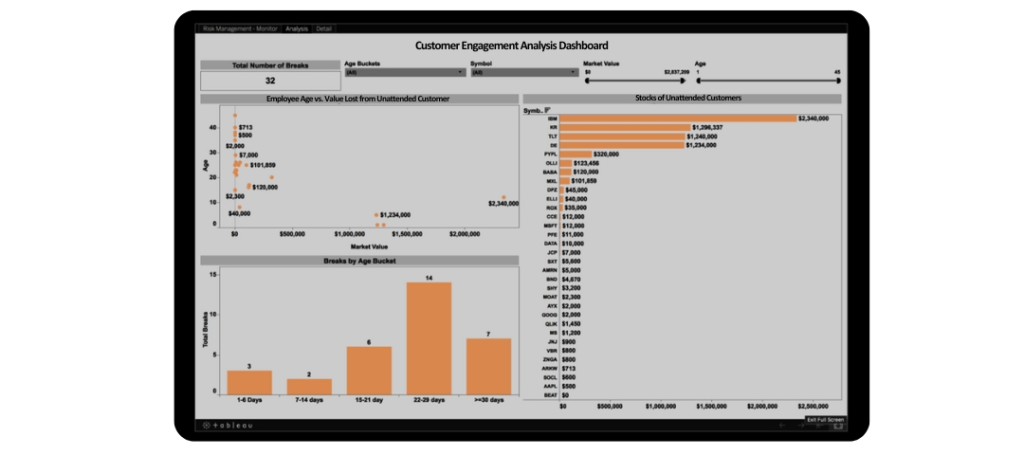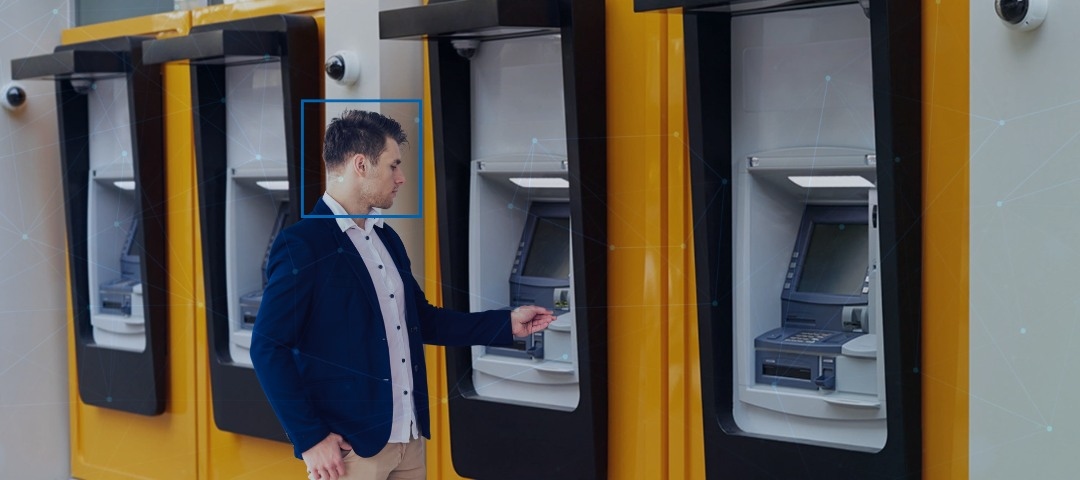Next-gen video surveillance for banks is mobilizing U.S.-based banks for a paradigm shift. With the rapid expansion of Industry 4.0 in the last few decades, diverse industries have been undergoing this shift towards tech-powered solutions to overcome the void induced in various organizational departments, such as surveillance. Especially in the banking and finance industry, the traditional man-guarding approach supplemented by cloud-based video-surveillance is being adopted across the globe. This transformation is protected with the integration of Internet of Things, cloud computing, cloud migration solutions, AI and its sub-fields like Deep Learning etc. which are redefining bank security. The main driving forces behind the shift to next-gen surveillance include external and internal thefts, frauds, cyber heists which are likely to remain a significant concern causing financial losses worldwide, for example, the Federal Reserve Bank heist in New York that led to a total calculated loss of $81 million in 2016.
Nowadays, issues with CCTV systems, hard disks storing video data, and deliberate deletion, misplacement or manipulation of stored recordings are reported to be common causes of looted funds and incomplete delivery of justice. The U.S. government has implied stringent regulations to emphasize the importance of machine learning in banking and avoid contraventions. These mandates include positioning of cameras at entry, exit points, in vault rooms, bi-yearly footage compliance, and execution of enhanced AI-based analytics and cybersecurity measures. The global AI in video surveillance market size was reported to be USD 5.74 billion in 2023 and is surging to be approximately valued at a CAGR of 28.1% till 2030.

Increasing global market size of video surveillance for banks during 2010s
Evolution of Video Analytics in Banking
Video and e-surveillance solutions and analytics lie at the forefront of redefining the banking industry by overcoming several challenges posed by deterring security incidents at remote branches. These may include non-compliance with regulatory guidelines around the positioning and effectiveness of security cameras, imposed by the Office of the Comptroller of the Currency (OCC) in collaboration with U.S. federal agencies. Earlier times witnessed rising incidents of theft, vandalism at non-operational hours of banks and ATMs due to lack of notifications during hardware equipment downtime, failures, undetected malfunctions, prolonged non-functional periods and irregular device health checkups. Moreover, authorities were subjected to fragmented views of multiple branches without unified dashboards managing live camera feeds. These challenges were undermined by the adoption of bank security cameras powered with analytics that enhanced banks’ security framework and mitigated incidents. Given below are the details of this transformative era.
1940s: These years were marked by the development of closed-circuit television (CCTV) analog systems that lacked intelligent processing capabilities and featured recording and playback only.
1990s: These years saw the advent of digital and IP cameras that provided higher resolution images and better flexibility. Moreover, video management systems featuring digital storage, remote surveillance and video annotation services had come into the picture, but still relied on manual monitoring.
2000s: Introduction of AI into video surveillance including web app development services for motion detection, object recognition as well as the advent of machine learning algorithms that detect and alert users about unusual activities and movement.
2010s: Adoption of deep learning and Convolutional Neural Networks (CNNs) into remote video surveillance cameras in banks and analytics. Also, AI models like You Only Look Once (YOLO) and Faster R-CNN supported real-time computer vision object detection, while video analytics started featuring facial recognition, behavioral analysis, anomaly detection, insights and automation.
2020s: Widespread adoption of cloud computing, predictive analytics, cloud platforms such as Google Cloud, Microsoft Azure, AWS and edge AI for processing videos at large scale. The future holds bespoke software development and applications such as integration with IoT devices, automated visual inspection and response systems, improved privacy protection, development of more sophisticated intelligent systems and application modernization.

High level workflow of intrusion detection powered by machine learning in banking
Benefits of Video Analytics in Banking
Banks can utilize AI-based video surveillance systems to monitor asset displacements, detect financial frauds, threats like weapons, abnormal behavior or wanted criminals, and even interactions between personnel and customers to ensure a pleasant service experience and satisfaction. These systems use cameras, sensors, and smart analytics for vision-based human activity recognition and to ensure regulatory standards are always met. Given below are more details regarding the advantages of deploying these systems –
Security & Surveillance
Video management systems encompassing features such as detailed and intelligent video analytics, automated alerts, notification seamlessly handle video feeds from surveillance cameras in banks deployed remotely. These systems monitor video data and frame-wise object-based image analysis in real-time with the help of AI to detect frauds, threats, weaponry, abnormal behavior, intrusion, motion detection, perimeter breach, tampering etc. Deep learning models like CNNs are widely used for detecting dangerous objects, asset removal, and classification of visitors, customers etc. within video feeds, for example, YOLO and Single Shot Multi-Box Detector (SSD) models identify and track suspicious individuals and objects in real-time. Examples of video management systems may include Milestone Systems XProtect that supports a variety of analytics plugins, and Genetec Security Center that embeds AI analytics with video surveillance for showcasing better security measures.
Fraud Detection
Recurrent Neural Networks models and other types of neural networks like Long Short-Term Memory (LSTM) networks can efficiently analyze customer behavior, achieve unusually high pattern recognition and detect anomalies in customer interactions. Advanced facial recognition banking algorithms empower models like FaceNet and OpenFace that are built on CNNs, are capable of identifying and verifying customers by comparing them against a database. Behavioral analytics can be integrated with camera systems like Hikvision DeepinView camera series, Face++ etc. for accurate behavioral pattern and facial recognition.
Customer Satisfaction
AI models combined with emotion recognition algorithms and Natural Language Processing, analyze video footage to assess customer sentiment, satisfaction level and provide insights. Computer vision-based solutions powered by object detection algorithms like YOLO or Faster R-CNN, integrated with bank security cameras can optimize queue management by counting people, monitoring queue lengths, estimating wait times and gauging customer reactions. Some commonly known systems such as Kaltura Video Analytics provide tools for analyzing customer engagement and interactions while engines like IBM Watson Visual Recognition can analyze visual data to extract customer behavior insights.
Operational Efficiency
Surveillance cameras in banks aided with AI-based models like CNNs and video analytics assist in ensuring regulatory compliance by detecting and reporting violations and improper handling of documents automatically in real-time. Deep learning models featuring time-series analysis and anomaly detection can track employee activities to improve overall operational efficiency and assure adherence to protocols. BriefCam is known to offer synopsis and analytics for compliance with regulations and improving operations, while Avigilon Control Center features compliance monitoring for operational efficiency.
Seamless Integration
Usually, the edge devices deployed at banking office premises come inbuilt with AI capabilities to process and analyze high-resolution videos locally in real-time, thus reducing latency, use of bandwidth, and filtering relevant data to be sent to centralized servers. These solutions based on machine learning in banking can either digitize and encrypt video signals and securely transmit them over an IP network to store the footage over cloud or can be directly deployed on cloud platforms for scalability, large storage, backup, authorized access and integration with other finance-related or banking systems. Some commonly known cloud-based surveillance, facial recognition, object detection and tracking, label detection, and activity analysis solutions include AWS Rekognition, Google Cloud Video Intelligence, Azure Video Analyzer etc.

Analytical dashboard showcasing customer engagement supported with facial recognition banking
Explore KritiKal’s Video Surveillance for Banks Solutions
In this blog, we discussed how implementation of video analytics in banking can establish future-proof security infrastructure by proactively mitigating threats in real-time, maintaining regulatory compliances and optimizing the operational workflow of banks. The solution leverages a combination of advanced AI and machine learning models to enhance security, detect fraud, improve customer experience, check bank opening and closing timings, manage employee attendance, and provide analytics around daily, weekly, monthly, biannual, quarterly and yearly count of visitors, customers, employees etc. across all remote branches of the bank or financial institution. Various hardware, software solutions like customer relationship management and video management systems, when integrated with technologies such as facial recognition banking, deep learning and edge computing solutions, ensure compliance, customer satisfaction and successful deployment of security measures. Thus, by integrating advanced surveillance techniques and adopting cutting-edge solutions, banking and financial institutions are ushering into the next-gen security era with time.
KritiKal’s AI-driven branch surveillance solutions are tailored for remote offices and business centers. These systems have notably enhanced productivity for numerous organizations and institutions by providing detailed operational analytics. The comprehensive monitoring solution includes advanced sensors and algorithms designed to address specific challenges effectively, such as customer tracking mechanism, branch wellness and access control monitoring, analytics, insights etc. Let KritiKal assist you in redefining the changing landscape of security and surveillance. Please email us at sales@kritikalsolutions.com to avail our services.

Rashmi Ray currently works as a Software Engineer at KritiKal Solutions and has experience in development of web and windows-based applications as well as handling databases. She is proficient in Data Structures, algorithms and various programming languages such as .NET Core, ASP. NET, MVC, MVVM, Windows Presentation Foundation (WPF), SSMS/T-SQL, and Oracle/PL-SQL. With her fast-learning abilities and passion for technology, she has helped KritiKal with timely delivery of projects to some major clients.



 Global
Global  United States
United States 
